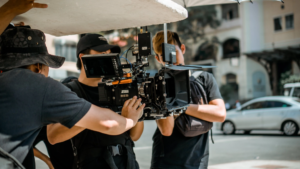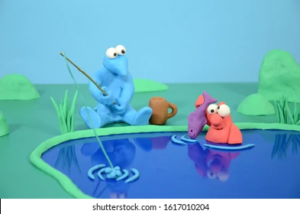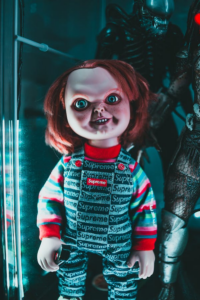What is an antagonist? The most straightforward explanation is that an antagonist is the polar opposite of the protagonist.

However, the phrase encompasses much more. We handle conflict in a better fashion in our screenplays if we comprehend how antagonists are utilized in screenwriting.
What Is an Antagonist? | Learn all about the antagonist character and how to spot them in stories
Who Is an Antagonist?
What exactly does antagonism imply? In a story, an adversary means difficulties for the protagonist. Screenwriters can utilize antagonists in a variety of ways to torment their protagonists.
A story’s antagonist is the power with which the protagonist must contend, whether human, natural, or otherworldly. Every protagonist requires an opponent.

Image Source: Screenrant
Different Types of Antagonists
Antagonists are of various kinds. They are:
Villain
The classic definition of an antagonist is a villain—an evil man in the story who is often working for wicked reasons to ruin the hero. While villains can be protagonists, they are antagonists when they are not the main character of the story but rather the primary source of conflict for the main characters.

Darth Vader and Captain Hook are two examples of villain protagonists.
The Joker in Christopher Nolan’s The Dark Knight is another famous example of the villain antagonist; everything about his persona is designed to inspire a sense of villainy in us. The Joker is an antagonist who works to bring chaos to Gotham City. His entire existence serves to contrast Batman, the story’s protagonist.

The Dark Knight — Creating the Ultimate Antagonist
Saruman from The Lord of the Rings is another figure who obstructs the Fellowship’s quest to destroy the one genuine ring of power. Although we knew Sauron was an opponent before this point, we had no idea what role Saruman would play. However, in disclosing his ultimate goal, we discover that Saruman is the Fellowship’s most immediate enemy.
Lord of the Rings from Saruman’s perspective
A Conflict Creator
An adversary does not always have to be an out-and-out antagonist.

Sometimes, like Mr. Darcy in Jane Austen’s Pride and Prejudice or Javert in Victor Hugo’s Les Miserables, they are simply characters whose ambitions directly contradict the protagonist’s.
Why everyone loves Mr. Darcy (Pride and Prejudice Character Analysis)
A comparison of Valjean and Javert, the main characters in Victor Hugo’s “Les Misérables”
Forces of Nature
The main opponent does not always have to be a person. It can also be a force, such as nature. The sea in Robinson Crusoe is an excellent example of this.

There are stories in which the antagonist is an environmental force. However, they are uncommon. This environmental foe is based on the age-old man vs. nature conflict structure. One of Alfred Hitchcock’s best films, The Birds, is a strong illustration of “man vs. nature” or “woman vs. nature” in film. Mad birds assault Melanie Daniels and the people of Bodega Bay in this Hitchcock classic.

Image Source: AllMovie
Melanie is the protagonist, while the birds represent the antagonistic forces of nature. The unexplained parts, in many respects, make this tension work so compelling. This struggle creates a sense of the supernatural and engages the audience’s imagination to understand what the subtext signifies.
The Birds: Why Do the Birds Attack?
The Protagonist/ Moral Antagonist
The main source of conflict in a novel can come from the protagonist’s own flaws or fears, preventing them from achieving their goal. Holden Caulfield from J.D. Salinger’s novel The Catcher in the Rye is an excellent example of this. While Holden has conflicts with a variety of characters throughout the novel, the constant antagonizing struggle is caused by his own obsessions and fears.
Catcher in the Rye – Holden as Narrator and Character
An anti-hero is usually always opposed by a moral enemy. What exactly is an anti-hero? According to the story, an anti-hero is a protagonist. They are defined by their own self-interests, which are frequently rejected by society, and lead to self-destructive behavior that leads to isolation or death.
Catch Me If You Can Frank Abagnale is a terrific example of an anti-hero, yet he is also a character with whom we empathize emotionally. This is because we are drawn to his intellect and sympathetic to the childhood difficulties.

Carl Hanratty is Abagnale’s main enemy. As an audience, we are often inclined to support Carl’s morality in his pursuit of fraudster Frank Abagnale. Carl is depicted as sympathetic and well-intentioned, which allows us to relate to him despite the fact that he is the antagonist.
In a game of cat and mouse, these two characters compete against one another. Carl is hoping that Frank will be virtuous. The confrontation between the two protagonists exemplifies where each of them stands. We see clear examples of how a protagonist and antagonist work against one another throughout Catch Me If You Can. Carl is a moral antagonist, while Frank is the anti-hero protagonist.
Catch Me If You Can (10/10) Movie CLIP – Nobody’s Chasing You (2002) HD
Mini/Secondary Antagonist
There can only be one protagonist in any story. However, there can be an infinite number of antagonists. There is a core antagonist and multiple secondary antagonists in certain films.

Image Source: The movie database
Kill Bill, one of Quentin Tarantino’s best flicks, contains the main antagonists and multiple secondary antagonists. Bill is the main antagonist, and the Deadly Viper Assassination Squad members are the supporting antagonists. One helpful analogy is to think of secondary antagonists as the mini-bosses you encounter before the ultimate boss in a video game. Before facing the primary antagonist’s final boss in Kill Bill, The Bride must battle these secondary antagonist mini-bosses.
Kill Bill: Volume 1 | The Bride vs The Crazy 88
What Does an Antagonist Add to a Film?
After looking at some contemporary and historical instances of antagonists in the film, we should be able to answer the question: what is an antagonist? An antagonist is a physical, environmental, or psychological force that works against the protagonist.
What are the advantages of knowing how an adversary works? The main advantage is that it assists us in determining which sorts of character conflict will work best in our screenplays.
The enemy must be a villain if our protagonist is a hero. The antagonist must be moral if our protagonist is an anti-hero. Our protagonists must feel suffocated by the world if they are at odds with it. However, we must also consider protagonists to comprehend character conflict completely.
How to Create a Strong Antagonist?
If you are trying to develop a compelling antagonist in screenwriting, playwriting, or novel, there are a few factors to keep in mind:
A Redeemable Quality
When the adversaries are evil, the story may lose the reader’s attention and become too unrelatable. Even in stories with villains, such as Star Wars, the writer can make the struggle more fascinating by giving the antagonist a mix of traits. For example, Darth Vader comes as the epitome of evil at first but softens as he interacts with Luke Skywalker.
Balance of Power
If your opponent is easily defeated in the end, people may be disappointed, believing that the stakes of the struggle were never high enough to be truly dramatic. On the other hand, if your opponent is all-powerful, spectators who want to see the protagonist have a chance may become frustrated. So, keep the powers and strength of the protagonist and antagonist at the same level.
The Difference Between an Antagonist and a Protagonist
Protagonists and antagonists are both essential characters in a work of art, yet they drive the storyline in opposite directions:
- The protagonist strives to achieve the critical tale goals, whereas the antagonist seeks to defeat them.
- Antonyms are the words “protagonist” and “antagonist.” In storytelling, protagonists and antagonists are two competing forces in a story.
The Lion King (Simba vs Scar) HD
Examples of Antagonists
The Joker – The Dark Knight(2008)

Kill the Batman (The Joker meets the Mob) | The Dark Knight [4k, HDR, IMAX]
Saruman – Lord of the Rings(2001)

LOTR The Fellowship of the Ring – Saruman the White
Darth Vader – Star Wars: The Empire Strikes Back(1980)

Voldemort – Harry Potter(2001)

The Story of Lord Voldemort: Tom Riddle Origins Explained (Re-Upload July, 2017)
Scar – The Lion King(1994)

The Lion King: Be Prepared | Sing-A-Long | Disney
Hannibal Lecter – The Silence of the Lambs(1991)

Hans Gruber – Die Hard(1988)

Captain Hook – Peter Pan(1953)

Disney Peter Pan (1953) – Captain Hook Scared Of Tic-Tock Croc
Gordon Gekko – Wall Street(1987)

Gordon Gekko on money, exploitation, and capitalism (Wall Street, Stone, 1987)
Agent Smith – The Matrix(1999)

Neo vs Smith Clones [Part 1] | The Matrix Reloaded [Open Matte]
Hans Landa – The Inglorious Basterds(2009)

What Makes Hans Landa One Of The Most Terrifying Villains in Film History
Tracy Flick – Election(1999)

Election (5/9) Movie CLIP – Slanderous Accusations (1999) HD
Erik Killmonger – Black Panther(2018)

Black Panther: Kill monger’s Brazen Heist [CLIP] | TNT
Terence Fletcher – Whiplash(2014)

Fletcher Destroys Out-of-Tune Trombone Kid | Whiplash (2014) | 1080p HD
John Fitzgerald + Nature – The Revenant(2015)

Fitzgerald (The Revenant) – Character Analysis
Travis Bickle – Taxi Driver(1976)

Analyzing Evil: Travis Bickle From Taxi Driver
Anton Chigurh – No Country for Old Men(2007)

Analyzing Evil: Anton Chigurh from No Country For Old Men
Christof – The Truman Show(1998)

The Truman Show/Best scene/Jim Carrey/Laura Linney/Ed Harris/Paul Giamatti/Natascha McElhone
Tyler Durden – Fight Club(1999)

Fight Club (5/5) Movie CLIP – Letting Yourself Become Tyler Durden (1999) HD
The Shark – Jaws(1975)

Jaws | Final Face-Off With the Shark in 4K Ultra HD
Nathan – Ex Machina(2015)

Ex Machina (4/10) Movie CLIP – How Ava Was Created (2015) HD
Dr. Charles Nichols – The Fugitive(1993)

you almost got away with it, didn’t you?
President Snow – The Hunger Games (2012)

The Life of Coriolanus Snow: Hunger Games Explained
Conclusion
The antagonist is not merely a foil character but also transcends beyond it. The well-written antagonists are not solely hated because they are manifestations of evil, but they also make us question and introspect. Influential antagonists make us root harder for the protagonists and empathize with them. Conversely, a film fails to engage its audiences if the antagonist’s function in the movie is to glorify its protagonist. Thus, craft your antagonists accordingly, so they give a tough fight to the protagonist and stand tall as your protagonists in audiences’ minds.














